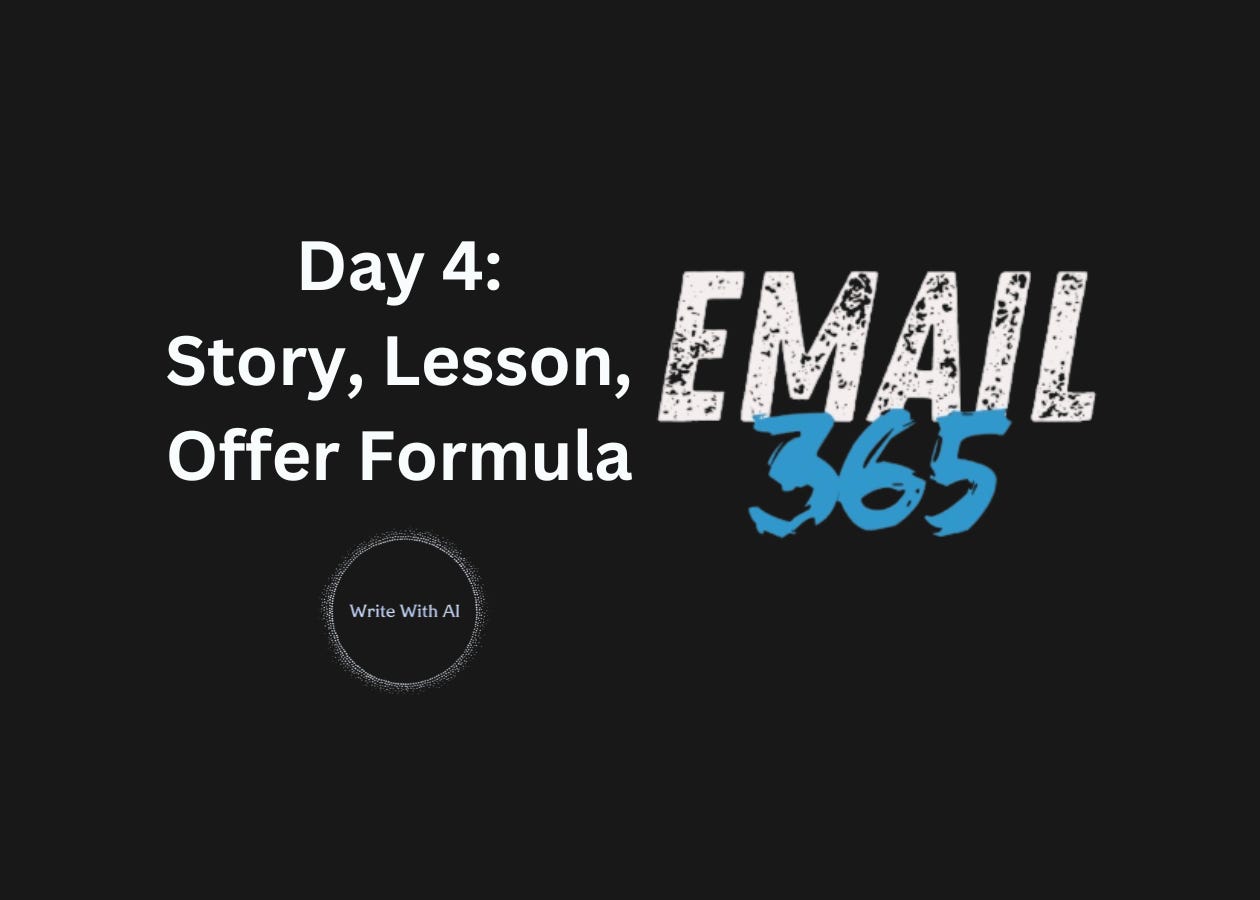Write seductive 200-word story emails in a snap
Build a cult-like following and sell while you sleep
This week’s series is written by Parker Worth—email copywriter and creator of Email 365. He helps entrepreneurs build an email list that earns $2–$5 per subscriber, every single month.
By now, you’ve learned how to write with emotion, use a killer email framework (PAS), and write subject lines that consistently deliver higher open rates.
Today you’re gonna learn the one skill that separates forgettable marketers…
From the ones who build cult-like followings and make sales in their sleep.
That skill?
Storytelling.
Why Stories Seduce Even The Biggest Skeptics
Ever watch a movie where you already know what’s going to happen…
…but you still sit there, eyes glued to the screen?
That’s the power of narrative.
Stories bypass the logic brain and speak straight to the gut.
People buy emotionally. Stories deliver emotion. That’s why stories sell.
But here’s the problem:
Most story-based emails suck.
They’re too long, too random, or too self-indulgent. So let’s fix that.
The Simple Storytelling Formula I Use To Write Emails
I teach this as the SLO Framework:
Story → Lesson → Offer
You’re not writing novels here. You’re writing tiny scenes with a point.
Here’s the 9-point outline I use to keep things short, punchy, and effective:
Subject Line
Hook
Start
Middle
End
Transition
Lesson
CTA
Sign-off
Write 1–2 sentences per section. That’s it.
The goal isn’t to write something clever. It’s to say something real — fast.
Stand Out In The Inbox With These 4 Kinds Of Stories
This email that landed me a mentorship with Ian Stanley:
“I accidentally ordered d*ck cheese.”
Yup.
A true story about mispronouncing pão de queijo in Brazil.
It got laughs and replies. It made me stand out.
But more importantly…
It made sales.
If you want to write stories that sell, these 4 kinds work like a charm:
Because their emotional.
Extreme events (accidents, illness, financial disaster)
Self-deprecating moments (embarrassment builds trust)
Relatable struggles (missed deadlines, failed launches, creative burnout)
Client stories (before → after with proof baked in)
Need help jogging your memory?
I’ve got you.
Here’s A Quick Method To Find Your Best Story Ideas:
Set a timer for 5-minutes.
Finish these sentences:
I felt embarrassed because…
I felt proud because…
I felt jealous because…
I felt like a total failure when…
Now pick one.
Then, tell the story in 3 parts:
What happened?
What changed?
What did you learn?
Bridge to your offer using one line like:
“Here’s what that taught me about email.”
“Kinda like what I show you in [your product].”
“It reminded me why this skill matters.”
Boom.
You’ve got a selling story that doesn’t feel like a sales email.
How To Write Your First SLO Email With ChatGPT Or Claude
Paste this into ChatGPT or Claude and fill in the inputs:
You are a copywriter who writes high-converting sales emails that don’t feel like sales emails.
You use a storytelling framework called SLO, which stands for:
- Story
- Lesson
- Offer
Here's how:
S = Story
Tell a short, punchy story that hooks the reader.
Start – In one sentence, set the scene: who, what, when.
Use this format:
[#] [time] ago I had a [problem]
Middle – Describe the struggle and conflict. Include:
• What happened
• How it felt
• Why it mattered
• Consequences
• Attempts to solve it
End – Show the transformation.
• What was the resolution?
• What changed?
Make it vivid, emotional, and real.
~
L = Lesson
Extract a clear, valuable takeaway that ties to the reader’s situation.
No generic advice. Share what the story character learned the hard way.
This should trigger an “oh damn, that’s true” reaction.
~
O = Offer
Transition cleanly into a product or service that solves the same kind of problem.
Use bridge phrases like:
“Here’s why I bring this up…”
“If you’re dealing with something similar…”
“Which is why I made [Product Name]...”
Include a single, clear CTA.
Keep it casual—not pitchy.
Output Format:
[Story: ~150–200 words]
[Lesson: 1–2 sentences]
[Offer: 1–2 sentences with CTA link]
Tone:
• Friendly but direct
• Witty, slightly self-deprecating
• Conversational, like talking to a smart friend who writes their own emails
• No marketing fluff, no hype, no fake drama
• Speak like someone who’s been through the mess and figured it out
Writing Constraints:
• Don’t ramble in the “Start.” Get to the conflict fast.
• Don’t moralize or sound like a guru in the “Lesson.” Just share the insight like a peer.
• Don’t over-sell in the “Offer.” The CTA should feel like a natural next step.
Now here’s your input block:
Write a story-based email for [TOPIC]. The story is about someone who [STRUGGLE], and how they overcame it using [STRATEGY/FRAMEWORK/TOOL]. The goal is to show the reader what’s possible and naturally introduce [PRODUCT/OFFER] as the next step.
Rerun it a few times. Mix in your own memory. You’ll be surprised what you get.
Tomorrow we wrap this series up with a bang.
I’ll show you how to write calls to action that convert — without sounding desperate, sleazy, or like every other AI-ridden pitchfest in the inbox.
For now?
Write your 3-sentence story:
What happened
What changed
What it taught you
Add a simple CTA.
You’re now doing what 99% of marketers can’t.
Catch ya tomorrow,
Parker
PS…Want more AI email marketing prompts like this?
Inside Email 365, I give you every prompt you need to write better emails for your business.
This library combines my secret methods of email marketing. It includes 31 professionally engineered AI prompts to create seductive email campaigns that give you repeat buyers fast!
And for the next 2 days, I’m giving it away to Write With AI readers free when you pick up a copy of Email 365—just as a thank-you.
👉 Click here to grab Email 365 + the bonus Inbox Intelligence Library






